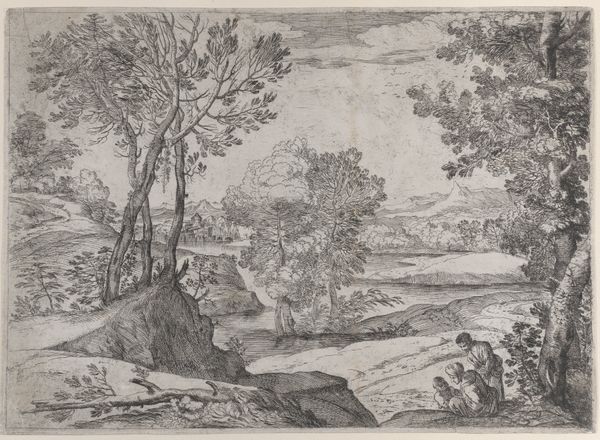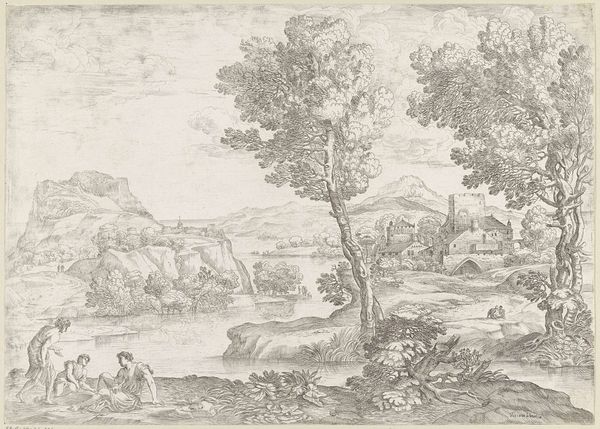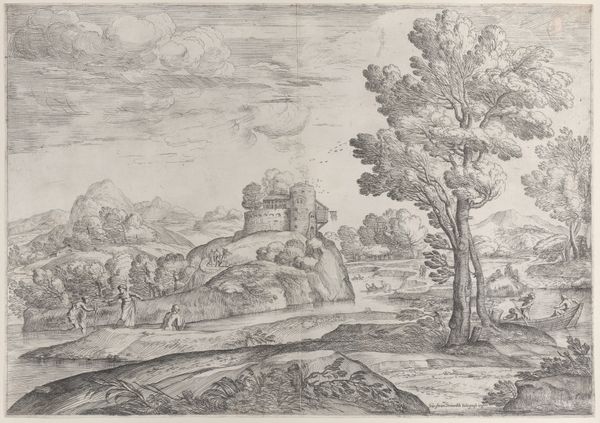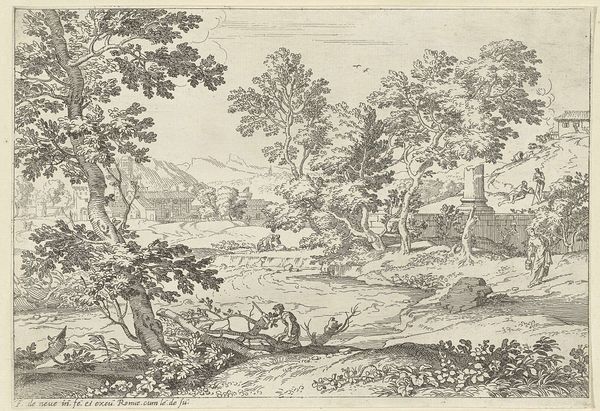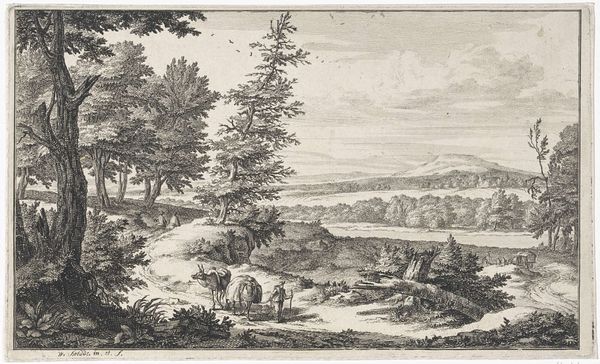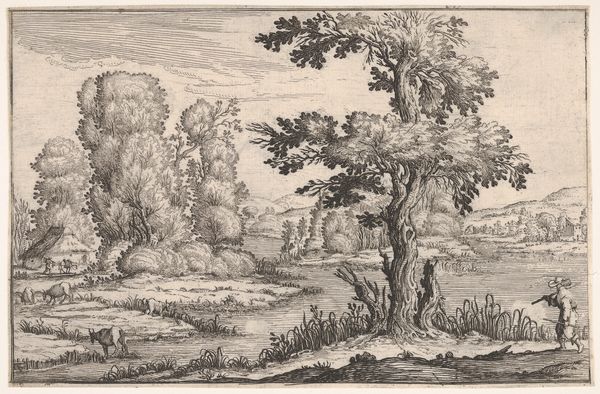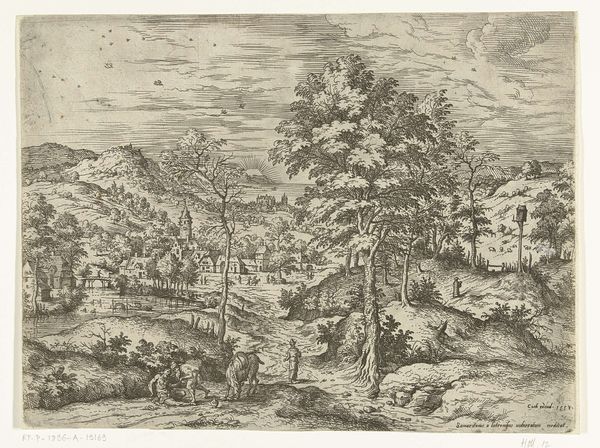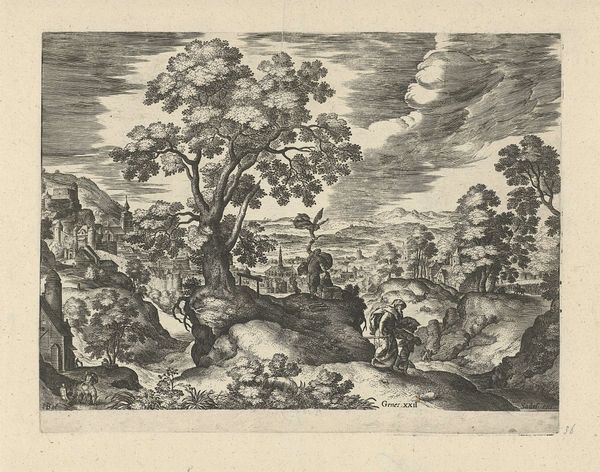
drawing, etching, paper, ink
#
drawing
#
baroque
#
pen sketch
#
etching
#
pencil sketch
#
landscape
#
bird
#
river
#
paper
#
ink
#
line
Dimensions: height 275 mm, width 385 mm
Copyright: Rijks Museum: Open Domain
Curator: So, here we have "Landscape with bird on a tree trunk," created sometime between 1616 and 1680 by Giovanni Francesco Grimaldi. It's a detailed ink drawing on paper, rendered in the Baroque style. What catches your eye first? Editor: Honestly, it's the stillness. Everything's so precisely rendered, but there's a kind of quiet hum in it. The almost photographic sharpness contrasted with that dream-like Baroque exaggeration makes my imagination run a bit wild. Curator: That precision, as you call it, is really a hallmark of the period. The Baroque artists like Grimaldi were really responding to the increasing demand from patrons for detailed landscapes that not only looked realistic, but would also be infused with their personal vision. Editor: The funny thing is, while I know all that intellectually, what grabs me is how... comforting it feels. Like a half-remembered childhood drawing that depicts a fantastic and inviting, yet safe, imaginary world. Curator: Yes, and that's important because Grimaldi wasn’t simply trying to replicate nature, but also infuse it with a classical sense of order and calm that reflected idealized views of life. Remember, landscape art at this time was also becoming associated with ideas about property and dominion. The gentry and aristocrats were keen on documenting what they owned. Editor: See, and that's where we diverge. To me, there's a sense of transience in this particular drawing, even with that supposed desire to instill this "ideal." Like the artist saw past that aristocratic projection of power. Like he got that any depiction is momentary. Curator: That might be true, and the medium itself is, as well. These were, by and large, often preparatory sketches used as references in larger paintings, drawings done for practice in order to refine their composition of form, line, and tone. It may be less important, then, for any possible socio-political reflection and more pertinent in how we see Grimaldi respond to the traditions that surround him. Editor: Possibly. But still, I wonder if he wasn't saying, ever so subtly, "All this grandeur, and we're just tiny figures under a massive, ancient tree." Curator: Perhaps. Either way, Grimaldi’s piece, no matter how the intentions behind its creation are interpreted, continues to prompt questions, thoughts and opinions, even now. Editor: Absolutely, and maybe the beauty lies in its enduring ambiguity. I leave with that sense that every look I cast will provide an utterly different interpretation each time.
Comments
No comments
Be the first to comment and join the conversation on the ultimate creative platform.


